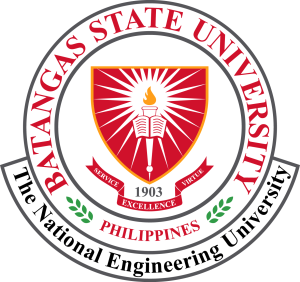BatStateU The NEU climbs in 2025 Times Higher Education Impact Rankings, breaks into 401-600 band globally
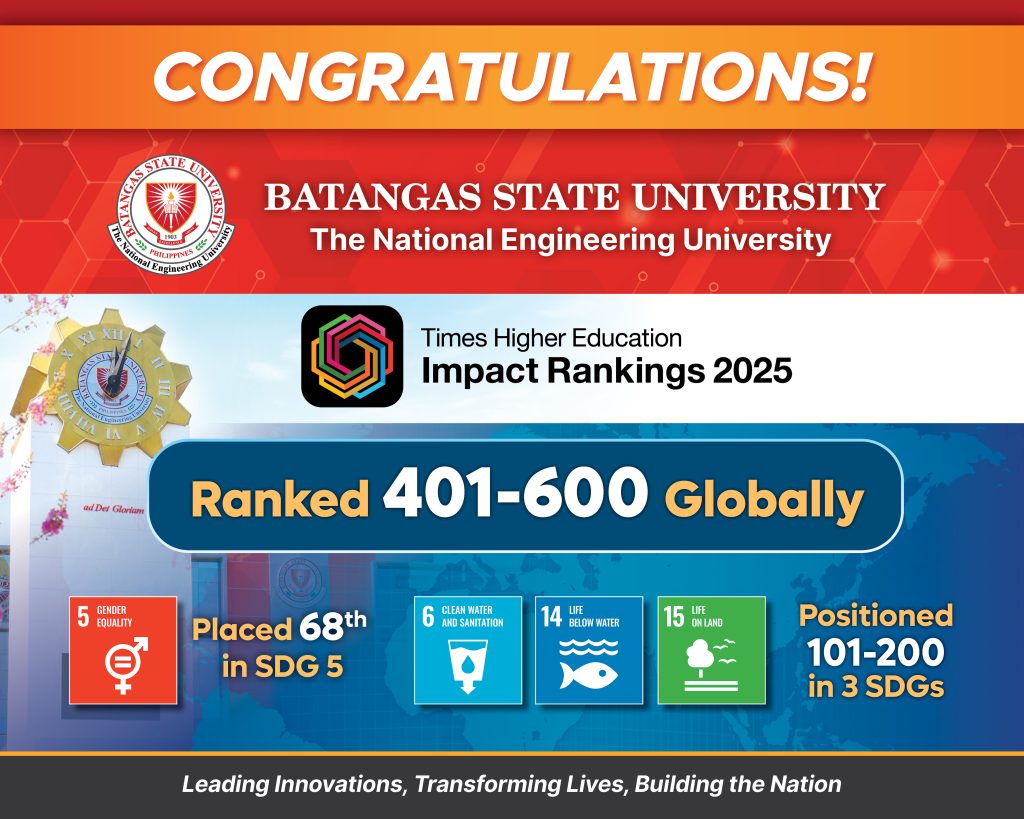
Strengthening its commitment to advancing the United Nations (UN) Sustainable Development Goals (SDGs), Batangas State University, The National Engineering University (BatStateU The NEU), has made a significant leap in the 2025 Times Higher Education (THE) Impact Rankings, rising from the 601–800 band to the 401–600 band out of 2,318 participating universities worldwide, as announced on June 18. Among 113 Philippine (PH) higher education institutions making the list, BatStateU The NEU secured 2nd place nationally—further affirming its leadership in driving SDG-aligned initiatives and championing inclusive, sustainable development. Despite intensified global competition—with 355 additional institutions participating this year—BatStateU not only ascended to a higher bracket but also recorded its highest overall performance score to date: 74.9. This marks a 10.47% increase from the previous year and an impressive 19.65% growth since its inaugural participation in 2023. “BatStateU is honored to be recognized once again by Times Higher Education,” said Dr. Tirso A. Ronquillo, University President. “This achievement reflects the steadfast efforts of our academic community—faculty, staff, students, alumni, and partners—who bring our mission to life every single day. As we continue to elevate our global standing, we remain grounded in our purpose: to engineer meaningful change through inclusive, sustainable, and forward-thinking innovation. My deepest thanks to everyone who walks this journey with us as we strive to build a more resilient and sustainable world,” he added. The THE Impact Rankings represents the first global initiative to assess how universities contribute to the United Nations Sustainable Development Goals (SDGs), evaluating performance across four key areas: research, stewardship, outreach, and teaching. Among the 17 UN SDGs, BatStateU stood out in four key areas, earning placements within the Top 101–200 universities globally, with one SDG breaking into the Top 100. Leading the charge is SDG 5: Gender Equality, where the University ranked 68th out of 1,559 institutions, its highest SDG ranking to date. This achievement was driven by a substantial rise in the percentage of senior female academic leaders—from 34.6 to 72.5—as well as enhanced measures for student access and increased representation of first-generation female students. Equally noteworthy is the University’s performance in SDG 6: Clean Water and Sanitation, where it earned high scores in water usage and care, boosting its overall score to 72.3, a significant leap from 63.3 in 2024. For SDG 14: Life Below Water, BatStateU maintained its strong global standing through consistent efforts in aquatic ecosystem preservation and improved marine-sensitive waste management. Lastly, under SDG 15: Life on Land, the University maintained its upward momentum, achieving a commendable score of 71.0 through expanded environmental education programs and advances in biodiversity research. In addition, the University has also outperformed the global average scores in 9 out of 17 SDGs, including Partnerships for the Goals (SDG 17), which is a mandatory goal for the said ranking. Batangas State University, designated as the Philippines’ National Engineering University through Republic Act No. 11694, is widely recognized for its excellence in engineering education. A Level-IV state university, it has produced over 180 engineering board topnotchers, solidifying its reputation as the country’s largest engineering university. Notably, BatStateU is also a pioneer in quality assurance for engineering education. It is the first state university in the Philippines to have engineering programs accredited by the Philippine Technological Council through its Accreditation and Certification Board for Engineering and Technology (PTC-ACBET). Moreover, it remains the first—and to date, the only—state university in the country with engineering and computing programs accredited by the US-based Accreditation Board for Engineering and Technology (ABET), through both its Engineering Accreditation Commission (EAC) and Computing Accreditation Commission (CAC). With a QS Stars Rating of three stars, BatStateU has also earned global recognition for its commitment to sustainability, ranking as the 304th Most Sustainable University in the 2024 UI GreenMetric World University Rankings. Furthermore, it was also recognized as the 128th most innovative university globally in the prestigious World University Rankings for Innovation (WURI) 2024. At the forefront of these efforts is the University’s Center for Sustainable Development (CSD), which serves as the central hub for advancing BatStateU’s sustainability agenda. Recognizing the urgent need for action in support of national and global sustainability goals, the CSD integrates sustainability across the University’s core functions—instruction, research, innovation, extension, and administrative services. Through active collaboration with students, faculty, staff, and partner communities, the Center fosters a shared responsibility for building a sustainable future. As such, it is envisioned to evolve into a leading platform for transformative action and thought leadership in sustainable development, both locally and globally. For the full rankings and methodology of THE Impact Rankings, detailed information can be accessed at the THE Website. #THEGlobalImpact#THEUniRankings#LeadingInnovations#TransformingLives#BuildingtheNation
CIEE Website
BatState-U CIEE Center for Innovation in Engineering Education Fueling Ingenuity and Leadership in Engineering Educationthrough MAJOR EVENTS Responsive About Section About Us The Center for Innovation in Engineering Education (CIEE) envisions to advance the quality of engineering education in order to develop academic and industry leaders in the global knowledge economy. CIEE aims to establish an engineering education hub that is committed to develop synergies within a community of interdisciplinary experts to further promote exchange of knowledge and resources from the university level to the industry sector or vice versa. The Center provides support to the engineering curriculum development as well as in achieving target areas in research, teaching, learning, and assessment pedagogies, professional training for capacity building and other Higher Education Institutions (HEI) needs. We also manage industry linkages and partnerships to foster developments in engineering education. CIEE also organizes international conferences in engineering education and manages the publishing of paper publications. Our Role “Transforming the Future of Engineering Education through Innovation.” Education Advancement and Excellence The Center supports the college through engineering curriculum development, assessment of graduate attributes, continuing professional growth, and continuous quality improvement (CQI). Partnerships, Linkages and Sustainability The Center manages industry linkages and partnership development, internationalization and global engagements. It also aims sustainable resource generation, scouting of grants, donation and endowment, and the establishment of a foundation. Professional Activities and Publications The Center manages the conduct of programs, events, and activities that support the academic and professional growth of students, teachers, and engineers. GOALS To fulfill its mandate of advancing engineering education and excellence, the CIEE has three (3) main objectives: 1. To provide support to the engineering curriculum development, assessment of graduate attributes, continuing professional development, teaching excellence recognition and awards, continuous quality improvement (CQI), selection and awarding of professorial chairs, mentoring of new engineering educators, spearheading research in engineering education, and direction setting to the college of engineering. It is also part of the objective to provide direction setting support to other HEIs. 2. To manage the partnership development, internationalization and global engagements, sustainable resource generation, scouting of grants, donation and endowment, and establishment of foundation. 3. To manage the conduct of conferences, technical exhibitions, and job fairs; as well as the publication of journals, magazines and newsletters, IEC (information, education and communication) materials, and digital content. “The Center for Innovation in Engineering Education provides opportunities for the university’s stakeholders to discover their potentials and enhance their technical and creative skills in a vibrant academic and research environment. Through pragmatic, innovation-driven activities anchored on industry-responsive programs, The CIEE builds on advanced knowledge and intellectual capital, which serve as the currency of the now and of the future… …so that its competitive advantage is acquired in the local and global workplace.” Dr. TIRSO A. RONQUILLO, ASEAN Eng. Batangas State University President Events and Conferences “Revolutionizing engineering education through innovation and collaboration!” All Competitons Event Conferences ASCENT’24 Conference ICIEE 2024 Conference WED 2024 Event Hackathon 2024 Competition ASCENT’23 Conference WED 2023 Event CDIO Workshop 2022 Event ASCENT’ 22 Conference WED 2022 Event Hackathon 2022 Competition ICIEE 2021 Conference SUEP 2021 Competition WED 2021 Event Our Publications “Innovate. Educate. Inspire: Discover the Latest in Engineering Education with Our Newsletter.” The Radial Volume I Q1 The Radial Volume I Q2 The Radial Volume II Q1 The Radial Volume II Q2 ASCENT 2022 Contact Us Location 3rd Floor, STEERHub Building, Batangas State University Alangilan Campus Batangas, Philippines 4200 E-Mail ciee@g.batstate-u.edu.phciee.secretariat@g.batstate-u.edu.ph Call +6343425-0143local 2411 Follow our Facebook Page To stay updated on our current Events, Conferences and Competitions Follow © Copyright Center for Innovation in Engineering Education. All Rights Reserved Designed by CIEE Development Team, KZ Maranan
Global Website
internationalGlobal Global About Us News Admission Schedule of Fees Partners & Linkages Downloads Students Other Information Contact Us internationalGlobal External Affairs Office The External Affairs Office (EAO) actively fosters local and global collaborations with academic institutions and industries, positioning itself as a catalyst for enhancing the national and international prominence of the University. Through its strategic efforts, the EAO serves as a key facilitator in promoting the institution’s internationalization initiatives while also ensuring meaningful global connections and implementing high-impact programs and projects. It is committed to providing a dynamic, forward-thinking, and inclusive learning environment enriched by meaningful cross-cultural exchanges with institutions across the globe. The EAO implements a range of internationalization programs, including international linkages and memberships, academic mobility programs, transnational higher education, and international research collaborations and community partnerships, all designed to accelerate a comprehensive, innovative, and inclusive learning experience. Further, the EAO plays a vital role in attracting international students and faculty members who bring their unique perspectives and diverse backgrounds to the community. The office is also responsible for establishing and managing local partnerships with other higher educational institutions, business industries, government agencies, non-governmental organizations, and other stakeholders, fostering a culture of collaboration and innovation. Central Administration Nasugbu Campus Pablo Borbon Campus Malvar Campus Alangilan Campus Lipa Campus External Affairs Organizational Chart
BSRU of Thailand visits BatStateU-The NEU to establish academic ties in research, community services, cultural sharing, and student and faculty exchange

Batangas State University, The National Engineering University (BatStateU-The NEU) further strengthened its commitment to internationalization after signing a Memorandum of Understanding (MoU) with Bansomdejchaopraya Rajabhat University (BSRU) on January 9. BSRU is a public higher educational institution which is among the top 60 universities in Thailand. It offers a wide range of undergraduate degree programs under its six faculties: Science and Technology, Education, Management Science, Humanities and Social Sciences, Music, Engineering and Industrial Technology. Additionally, this institution provides 14 Master’s and seven Ph.D. degree programs, as well as a Graduate Diploma program for Teacher Training. BatStateU-The NEU President Dr. Tirso A. Ronquillo and BSRU President Dr. Linda Gainma led the ceremonial MoU signing, which symbolizes the partnership between the two universities in academic collaboration. These include the conduct of academic, research, and community services; the development of joint research, publication, seminar, and conference; the exchange of faculty members, staff members, and students for both short and long terms; and the conduct of cultural activities. This initiative is aligned with the attainment of Sustainable Development Goals particularly SDG 4 (Quality Education), SDG 8 (Decent Work and Economic Growth), SDG 10 (Reduced Inequalities), and SDG 17 (Partnerships for the Goals). “I am delighted about this partnership as it will bring visibility, credibility and prestige to an initiative. I know that it will demonstrate a strong commitment towards ensuring students and staff access to mentorship, experiential learning, equity, inclusivity and even exposure to new challenges and perspectives, and this is something I am truly excited about,” Dr. Ronquillo articulated. Both Higher Educational Institutions (HEIs) set out to establish an institute of learning for teacher and human development towards producing communicative, skillful, and multicultural-trained graduates. In parallel, BatStateU-The NEU and BSRU agreed to conduct collaborative research projects among faculty, engage in Student Visits and Exchange and Teaching Internship Exchange, and hold webinars/seminars and training to empower and inspire the next generation of leaders, to improve the lives of professionals and to serve as stewards of the best practices in teacher education program. BatStateU-The NEU is also open to exploring other prospective opportunities with BSRU in other relevant projects and initiatives that will enhance the education of their students, increase research accomplishments, broaden the knowledge base of their faculty, and promote mutual understanding and enlightenment of the people of their respective countries. BSRU delegates, including Vice President Dr. Sutipporn Chotratanasak, Vice President Assoc. Prof. Sayan Puttala, Asst. President Dr. Suriya Phankosol, Chairman of Academic Services Project Assoc. Prof. Somchai Promsuwan, Chairman of Doctoral Programme in Curriculum and Instruction Dr. Areewan Iamsa-Ard, Director of Office of International Affairs and ASEAN Network Dr. Kulsirin Aphiratvoradej, Dean of Graduate School of Dr. Kanakorn Sawangcharoen, Deputy Deans of Graduate School Dr. Nainapas Injoungjirakit and Asst. Prof. Akaranun Asavarutpokin, and Deputy Director of Office of International Affairs and ASEAN Network Asst. Prof. Chalermsup Karamjakwut also graced the ceremonial MoU signing. Also present is Dr. Teodorica G. Ani, Director of External Affairs from BatStateU Central, along with other BatStateU officials from the Malvar campus, including Chancellor Dr. Philip Y. Del Rosario, Vice Chancellor for Development and External Affairs Dr. Sharon G. Angulo, Vice Chancellor for Academic Affairs Dr. Amado C. Gequinto, Dean of College of Teacher Education Dr. Nora V. Marasigan, Head of External Affairs Dr. Romel M. Aceron and Focal Person in Internationalization in Action of CTE Dr. Genalyn P. Lualhati. Preview in new tab
BatStateU-The NEU joins the observance of the 18-day Campaign to End Violence Against Women (VAW)
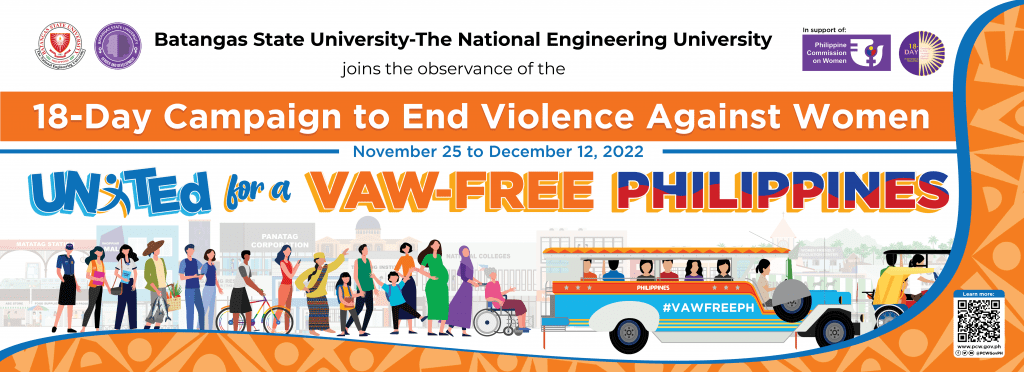
Batangas State University-The National Engineering University is one with the international community and the Philippine Commission on Women (PCW) in advocating to stop and prevent Violence Against Women through the annual 18-Day Campaign to end VAW from November 25 to December 12, 2022. Bearing the theme “UNiTED for a VAW-free Philippines” which highlights the powerful impact of combining individual efforts towards a collaborative and united thrust towards a VAW-free Philippines, this year’s campaign include activities initiated by BatStateU Gender and Development (GAD) Office that endeavour to gauge the awareness of citizens on VAW and its forms and manifestations as well as underscore the gains attained in the journey towards a VAW-free community.
The New Batangas State University Library Website and Library System
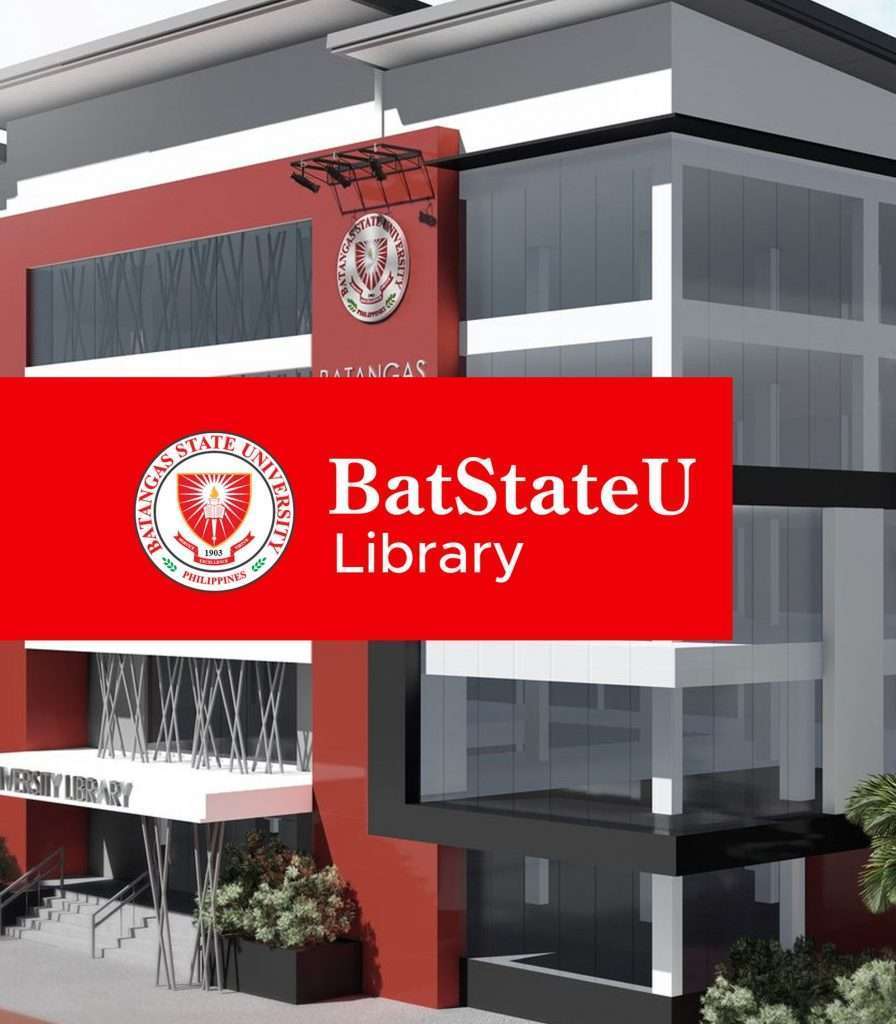
As part of its continued efforts to provide not only a renewed sense of normalcy but also fresh, new ways to deliver academic services amidst the global pandemic, the Batangas State University accelerates the shift to digital and electronic means of reaching out to its stakeholders.
Batangas State University champions the World Robot Olympiad Singapore 2025
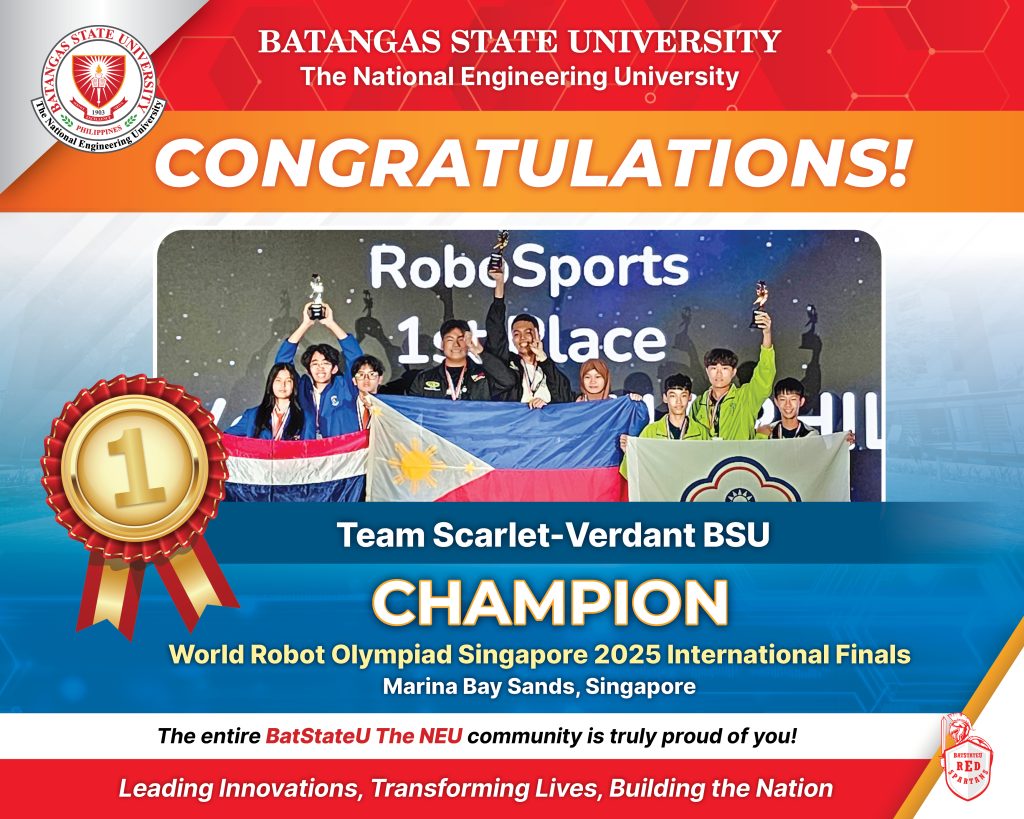
Elementor #309608 November 29, 2025 Public Relations 8:00 pm Batangas State University, The National Engineering University (BatStateU The NEU), proudly celebrates another global milestone as its student team was hailed World Champion at the World Robot Olympiad (WRO) Singapore 2025 International Finals, held at the Sands Expo and Convention Centre, Marina Bay Sands, Singapore on November 26–28, 2025. Competing among the world’s best young innovators, the Philippine delegation—led by BatStateU students—secured a landmark victory that reinforces the university’s standing as a rising powerhouse in robotics, engineering, and STEM education. The trio behind the championship win, Team Scarlet-Verdant BSU, dominated the RoboSports – Double Tennis category, emerging Rank 1 out of 56 global teams, ahead of strong delegations from Thailand and Taiwan, which secured 2nd and 3rd place, respectively. Composed of Joseph Bernard A. Maala, a first-year BS Mechatronics Engineering student from BatStateU Alangilan, and Light Gabriel M. Bandayrel and Norjeehan A. H. Nasser, both Grade 11 students from BatStateU Integrated School (Pablo Borbon), the team demonstrated exceptional skill in designing and programming fully autonomous robots capable of real-time coordination and strategic gameplay. Their winning performance showcased mastery of algorithm design, precision navigation, decision-making under time pressure, and high-level competitive robotics. In the RoboSports Double Tennis challenge, teams control two autonomous robots that must strategically push all balls from their side of the field to the opponent’s half within a two-minute match—requiring speed, coordination, and impeccable coding. The BatStateU champions outperformed teams from around the world, excelling in efficiency, robot intelligence, and match strategy. Their victory reflects BatStateU’s strong robotics program and the university’s commitment to strengthening STEM competencies among Filipino youth. “This world-class triumph attests to the exceptional talent and determination of our students,” said Dr. Tirso A. Ronquillo, University President. “Their achievement reflects not just their individual brilliance but also BatStateU’s mission to nurture globally competitive innovators who bring honor to the nation. Through programs that sharpen engineering, computational thinking, and problem-solving skills, we continue to empower future leaders in technology and innovation.” BatStateU The NEU also celebrated commendable performances from its other teams across multiple WRO categories, further solidifying the university’s strong presence on the global robotics stage. Team BSU-IS GMR placed 12th out of 56 teams in RoboSports – Double Tennis; Team JEEP ranked 16th out of 64 teams in the Future Engineers – Self-Driving Car category; Team SCOPE earned 16th out of 72 teams in Senior Future Innovators; Team HUREA placed 22nd out of 31 teams in Elementary Future Innovators; and Team BSU-IS ALR secured 24th out of 95 teams in Senior RoboMission—remarkable results that collectively highlight BatStateU’s deep pool of young robotics talents. These teams were guided by coaches Mr. Luis Philip M. Oropesa, Mr. Eugene E. Mendoza, and Mr. Jomari B. Montalbo, whose mentorship has been central to the university’s growing tradition of robotics excellence. The World Robot Olympiad is one of the world’s premier robotics competitions, bringing together young innovators aged 8 to 22 from across the globe. Through challenges that emphasize creativity, engineering design, programming, and real-world problem-solving, WRO aims to foster a new generation of STEM leaders capable of addressing complex global challenges. BatStateU The NEU remains steadfast in advancing robotics, engineering education, and technological innovation, shaping the nation’s next generation of industry leaders and strengthening the Philippines’ position in the global innovation landscape. About Batangas State University Batangas State University (BatStateU), the Philippines’ National Engineering University under Republic Act No. 11694, is the country’s largest engineering institution and a recognized leader in engineering and technology education. It is the first and only state university in the Philippines with engineering and computing programs accredited by both the US-based Accreditation Board for Engineering and Technology (ABET) and the Philippine Technological Council–Accreditation and Certification Board for Engineering and Technology (PTC-ACBET). Globally recognized for its innovation and sustainability initiatives, BatStateU ranks 401–600 in the 2025 Times Higher Education Impact Rankings, 111th in the 2025 World University Rankings for Innovation (WURI), and 304th in the 2024 UI GreenMetric World University Rankings. The University remains committed to advancing transformative, industry-aligned education that produces globally competitive graduates and drives national development. Previous Post
BatStateU The NEU stands in solidarity in the 18-Day campaign to end Violence Against Women
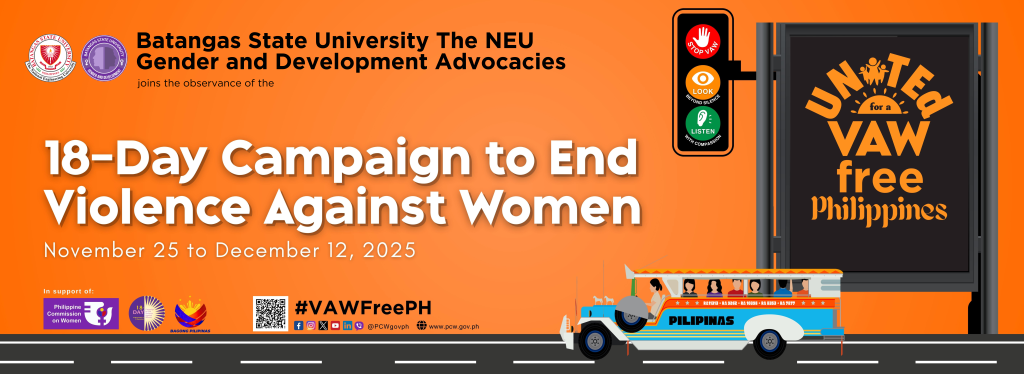
BatStateU The NEU stands in solidarity in the 18-Day campaign to end Violence Against Women November 25, 2025 Public Relations 8:00 am Batangas State University, The National Engineering University (BatStateU The NEU), through its Gender and Development Advocacies Office, joins the nationwide observance of the 18-Day Campaign to End Violence Against Women (VAW), running from November 25 to December 12, 2025. With the theme “Stop VAW: Look Beyond the Silence, Listen with Compassion,” this year’s campaign underscores the urgency of confronting and ending violence against women. The focus is on raising awareness, breaking the silence, and encouraging compassionate actions to foster a society free from violence and discrimination. BatStateU, committed to promoting gender equality, will engage the university community through a series of activities designed to empower individuals, spark meaningful conversations, and advocate for a culture of respect and inclusion. #VAWFreePH Previous Post
CALABARZON: Powering Philippine Industrial Growth through Industry-Based Learning at BatStateU LIMA Campus

CALABARZON: Powering Philippine Industrial Growth through Industry-Based Learning at BatStateU LIMA Campus November 13, 2025 Public Relations 2:46 pm As the Philippines’ premier industrial corridor, CALABARZON continues to anchor national economic growth through its vibrant network of manufacturing, technology, and production enterprises. Encompassing the provinces of Cavite, Laguna, Batangas, Rizal, and Quezon, the region hosts the country’s highest concentration of industrial parks and technoparks, serving as home to global and local leaders in automotive, semiconductor, electronics, and food manufacturing. This industrial landscape has transformed CALABARZON into the nation’s most dynamic engine of employment and innovation. The region consistently leads the country in generating jobs across mechanical, technical, and industrial occupations—clear evidence of its economic strength and its continuing demand for a workforce equipped with advanced, industry-relevant skills. Yet, this progress also brings an urgent challenge: aligning education with the complexity of modern industry. Employers now seek graduates who are not only academically trained but operationally competent—capable of working in high-precision, technology-driven environments. To sustain CALABARZON’s growth trajectory, education must evolve from classroom-based instruction to immersive, industry-embedded learning that develops real-world competencies alongside academic excellence. This is the mission that Batangas State University, The National Engineering University (BatStateU The NEU), fulfills through its newly launched BatStateU LIMA Campus, strategically located within LIMA Estate—one of the largest and most advanced industrial estates in the Philippines. Designed as a hub for applied learning and innovation, the campus serves as BatStateU’s flagship response to the workforce development needs of CALABARZON and the nation. “The CALABARZON region represents the heart of Philippine industrialization. By embedding our university right within this dynamic ecosystem, BatStateU ensures that education and industry move forward together—mutually reinforcing each other to strengthen national competitiveness,” declared Dr. Tirso A. Ronquillo, University President. At BatStateU LIMA Campus, learning is powered by the University’s Industry-Based Learning (IBL) model, which integrates academic instruction with real-world experience. Under this framework, industry acts as a co-educator, directly participating in curriculum design, mentorship, and competency assessment. Through the Extended Professional Placement (EPP)—a two-semester professional immersion—students work within partner companies in CALABARZON, gaining operational experience and applying engineering knowledge to actual production, design, and innovation challenges. This immersive model ensures that BatStateU graduates are immediately workforce-ready and capable of contributing to the efficiency, innovation, and sustainability goals of their employers. By gaining hands-on experience in high-tech environments, students are empowered to participate in global advancements across robotics, artificial intelligence, and sustainable technologies. The approach also strengthens industry-academe collaboration by fostering a continuous feedback loop—where companies shape academic programs, and universities produce graduates who address evolving technological needs. Beyond degree programs, BatStateU LIMA Campus also advances lifelong learning and professional development within CALABARZON’s industrial sector. Through the Expanded Tertiary Education Equivalency and Accreditation Program (ETEEAP), mid-level professionals can earn formal college degrees by validating prior learning and experience, while the University’s Industry Microcredential programs allow employees to upskill or reskill in areas such as data science, cybersecurity, Internet of Things (IoT), and advanced manufacturing. The campus itself reflects the University’s forward-looking vision. Featuring smart classrooms, advanced laboratories, and digital-ready systems for hybrid learning, the BatStateU LIMA Campus is built to support an integrated educational experience where students and professionals can study, collaborate, and innovate alongside the industries shaping CALABARZON’s economy. IN PHOTO: Aboitiz Economic Estates President and CEO Mr. Rafael Fernandez De Mesa together with BatStateU President Dr. Tirso A. Ronquillo and DOST Assistant Secretary for Technology Transfer, Communications, and Commercialization Dr. Napoleon K. Juanillo Jr. Officially launched on November 11, 2025, at Biz Hub, LIMA Estate in Lipa-Malvar, Batangas, the BatStateU LIMA Campus marks a significant milestone in the University’s commitment to innovation and industry collaboration. This was made possible after the Board of Aboitiz Economic Estates approved the donation of ten hectares of land within the Aboitiz LIMA Estate to Batangas State University on June 13, 2025. It was further solidified by the formal signing of a Memorandum of Agreement (MOA) between BatStateU The NEU and Aboitiz Economic Estates on August 12, 2025, establishing the campus. As the region continues to lead in national output and employment, BatStateU The NEU stands at the forefront of ensuring that its human capital keeps pace with technological and industrial progress. By cultivating globally competitive, industry-embedded professionals, the University contributes not only to regional prosperity but also to the realization of a sustainable, innovation-driven Philippine economy. About Batangas State University Batangas State University (BatStateU), the Philippines’ National Engineering University under Republic Act No. 11694, is the country’s largest engineering institution and a recognized leader in engineering and technology education. It is the first and only state university in the Philippines with engineering and computing programs accredited by both the US-based Accreditation Board for Engineering and Technology (ABET) and the Philippine Technological Council–Accreditation and Certification Board for Engineering and Technology (PTC-ACBET). Globally recognized for its innovation and sustainability initiatives, BatStateU ranks 401–600 in the 2025 Times Higher Education Impact Rankings, 111th in the 2025 World University Rankings for Innovation (WURI), and 304th in the 2024 UI GreenMetric World University Rankings. The University remains committed to advancing transformative, industry-aligned education that produces globally competitive graduates and drives national development. About Aboitiz Economic Estates Aboitiz Economic Estates is Asia’s leading developer and operator of smart and sustainable industry-anchored townships, with a 2,000-hectare footprint, 250 industrial locators, and 100,000 jobs generated across Southern Luzon and Central Visayas, with ongoing strategic expansions into Central Luzon. Catering to a wide range of businesses and communities, Aboitiz Economic Estates’ portfolio includes the 1000-hectare LIMA Estate in Lipa-Malvar, Batangas; the 63-hectare Mactan Economic Zone 2 Estate in Lapu-Lapu City, Cebu; the 540-hectare West Cebu Estate in Balamban, Cebu; and the 384-hectare TARI Estate in Tarlac City, Tarlac. The multi-awarded Economic Estates are well-supported by a comprehensive ecosystem of infrastructure facilities and services, managed by Aboitiz businesses, including Aboitiz InfraCapital, AboitizPower, and Aboitiz Construction.
Transparency Seal
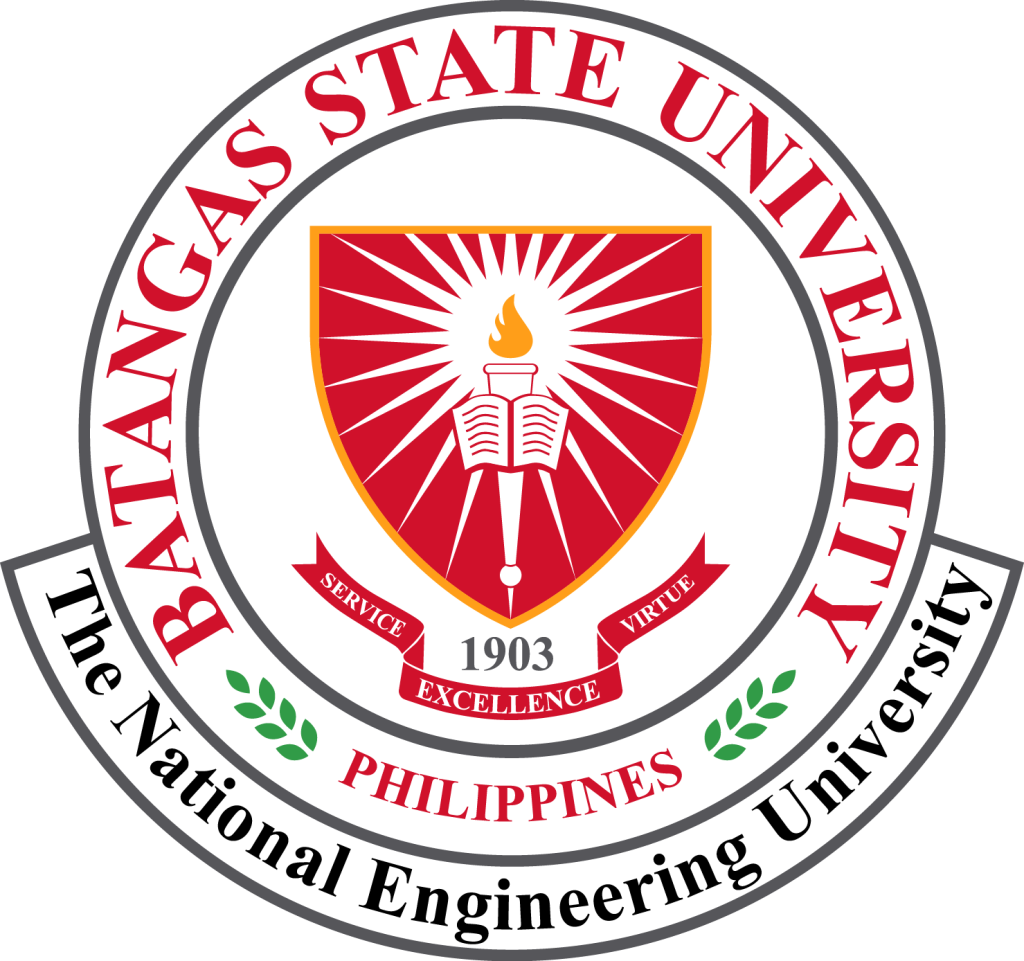
Transparency Seal I. Agency’s Mandate, Vision, Mission and List of Officials Mandate Citizen’s Charter Vision University Officials II. Annual Financial Reports Approved Budget * MDS Fund – (Fund 101) General Appropriation Act (GAA) 2025 2024 2023 2022 2021 2020 2019 2018 2017 2016 National Expenditures Program (NEP) 2026 2025 2024 2023 2022 2021 2020 2019 2018 2017 2016 STF Fund – (Fund 164) Program of Receipts and Expenditures (PRE) 2025 2024 2023 2022 2021 2020 2019 2018 2017 2016 Supplemental Budget 2025 2024 2023 2022 2021 2020 2019 2018 2017 2016 Consolidated Budget (DBM & Internally Generated Income) 2025 2024 2023 2022 2021 2020 2019 2018 2017 FAR No. 1: Statement of Appropriations, Allotments, Obligations, Disbursements and Balances 2025: Third Quarter (Current), Third Quarter (Continuing), Second Quarter (Continuing), First Quarter (Continuing), Second Quarter (Current), First Quarter 2024: Fourth Quarter (Current), Fourth Quarter (Continuing), Third Quarter (Current), Third Quarter (Continuing), Second Quarter (Continuing), Second Quarter (Current), First Quarter (Continuing), First Quarter 2023: Fourth Quarter (Current), Fourth Quarter (Continuing), Third Quarter (Continuing), Third Quarter, Second Quarter (Continuing), Second Quarter, First Quarter (Continuing), First Quarter 2022: Fourth Quarter (Continuing), Fourth Quarter, Third Quarter (Continuing), Third Quarter, Second Quarter (Continuing), Second Quarter, First Quarter (Continuing), First Quarter 2021: Fourth Quarter, Third Quarter, Second Quarter, First Quarter 2020: Fourth Quarter, Third Quarter, Second Quarter, First Quarter 2019: Fourth Quarter (Continuing), Fourth Quarter (Current), Third Quarter, Second Quarter, First Quarter 2018: Fourth Quarter, Third Quarter, Second Quarter, First Quarter 2017: Fourth Quarter, Third Quarter, Second Quarter, First Quarter 2016: Fourth Quarter, Third Quarter, Second Quarter, First Quarter 2015: Fourth Quarter, Third Quarter, Second Quarter, First Quarter 2014: Fourth Quarter, Third Quarter, Second Quarter 2013: Fourth Quarter, Third Quarter, Second Quarter, First Quarter FAR No. 1-A : Summary of Appropriations, Allotments, Obligations, Disbursements and Balances by Object of Expenditures (SAAODBOE) 2025: Third Quarter (Current), Third Quarter (Continuing), Second Quarter (Current), Second Quarter (Continuing), First Quarter (Current), First Quarter (Continuing) 2024: Fourth Quarter (Current), Fourth Quarter (Continuing), Third Quarter (Current), Third Quarter (Continuing), Second Quarter (Continuing), Second Quarter (Current), First Quarter (Continuing), First Quarter 2023: Fourth Quarter (Current), Fourth Quarter (Continuing), Third Quarter (Continuing), Third Quarter, Second Quarter (Continuing), Second Quarter, First Quarter (Continuing), First Quarter 2022: Fourth Quarter (Continuing), Fourth Quarter, Third Quarter (Continuing), Third Quarter, Second Quarter (Continuing), Second Quarter, First Quarter (Continuing), First Quarter 2021: Fourth Quarter, Third Quarter, Second Quarter, First Quarter 2020: Fourth Quarter, Third Quarter, Second Quarter, First Quarter 2019: Fourth Quarter (Continuing), Fourth Quarter (Current), Third Quarter, Second Quarter, First Quarter 2018: Fourth Quarter, Third Quarter, Second Quarter, First Quarter 2017: Fourth Quarter, Third Quarter, Second Quarter, First Quarter 2016: Fourth Quarter, Third Quarter, Second Quarter, First Quarter FAR No. 1-B : List of Allotments and Sub-Allotments (LASA) 2025: Third Quarter, Second Quarter, First Quarter 2024: Fourth Quarter, Third Quarter, Second Quarter, First Quarter 2023: Fourth Quarter, Third Quarter, Second Quarter, First Quarter 2022: Fourth Quarter, Third Quarter, Second Quarter, First Quarter 2021: Fourth Quarter, Third Quarter, Second Quarter, First Quarter 2020: Fourth Quarter, Third Quarter, Second Quarter, First Quarter 2019: Fourth Quarter, Third Quarter, Second Quarter, First Quarter 2018: Fourth Quarter, Third Quarter, Second Quarter, First Quarter 2017: Fourth Quarter, Third Quarter, Second Quarter, First Quarter 2016: Fourth Quarter, Third Quarter, Second Quarter, First Quarter FAR No. 2 : Statement of Approved Budget, Utilizations, Disbursements and Balances (SABUDB) 2025: Third Quarter, Second Quarter, First Quarter 2024: Fourth Quarter, Third Quarter, Second Quarter, First Quarter 2023: Fourth Quarter, Third Quarter, Second Quarter, First Quarter 2022: Fourth Quarter, Third Quarter, Second Quarter, First Quarter 2021: Fourth Quarter, Third Quarter, Second Quarter, First Quarter 2020: Fourth Quarter, Third Quarter, Second Quarter, First Quarter 2021: Fourth Quarter, Third Quarter, Second Quarter, First Quarter 2020: Fourth Quarter, Third Quarter, Second Quarter, First Quarter 2019: Fourth Quarter, Third Quarter, Second Quarter, First Quarter 2018: Fourth Quarter, Third Quarter, Second Quarter, Second Quarter, First Quarter 2017: Fourth Quarter, Third Quarter, Second Quarter, First Quarter 2016: Fourth Quarter, Third Quarter, Second Quarter, First Quarter FAR No. 2-A : Summary of Approved Budget, Utilizations, Disbursements and Balances by Object of Expenditures (SABUDBOE) 2025: Third Quarter, Second Quarter, First Quarter 2024: Fourth Quarter, Third Quarter, Second Quarter, First Quarter 2023: Fourth Quarter, Third Quarter, Second Quarter, First Quarter 2022: Fourth Quarter, Third Quarter, Second Quarter, First Quarter 2021: Fourth Quarter, Third Quarter, Second Quarter, First Quarter 2020: Fourth Quarter, Third Quarter, Second Quarter, First Quarter 2019: Fourth Quarter, Third Quarter, Second Quarter, First Quarter 2018: Fourth Quarter, Third Quarter, Second Quarter, Second Quarter, First Quarter 2017: Fourth Quarter, Third Quarter, Second Quarter, First Quarter 2016: Fourth Quarter, Third Quarter, Second Quarter, First Quarter FAR No. 3 : Aging of Due and Demandable Obligations 2024: Fourth Quarter 2023: Fourth Quarter 2022: Fourth Quarter 2021: Fourth Quarter 2020: Fourth Quarter 2019: Fourth Quarter 2018: Fourth Quarter 2017: Fourth Quarter 2016: Fourth Quarter FAR No. 4 : Monthly Report on Disbursement / Summary Report on Disbursement 2025: October, September, August, July, June, May, April, March, February, January 2024: December, November, October, September, August, July, June, May, April, March, February, January 2023: December, November, October, September, August, July, June, May, April, March, February, January 2022: December, November, October, September, August, July, June, May, April, March, February, January 2021: December, November, October, September, August, July, June, May, April, March, February, January 2020: December, November, October, September, August, July, June, May, April, March, February, January 2019: December, November, October, September, August, July, June, May, April, March, February, January 2018: December, November, October, September, August, July, June, May, April, March, February, January 2017: December, November, October, September, August, July, June, May, April, March, February, January 2016: December, November, October, September, August, June and July, May, January to April 2015: December, November, October, September, August, July, June, May, April, March, February, January 2014: December, November, October, September, August, July, June, May, April, March, February, January 2013: December, November, October, September, August, July, June, May, April, March, February, January FAR No. 5: Quarterly Report on Revenue and Other

